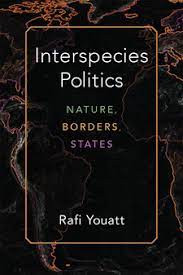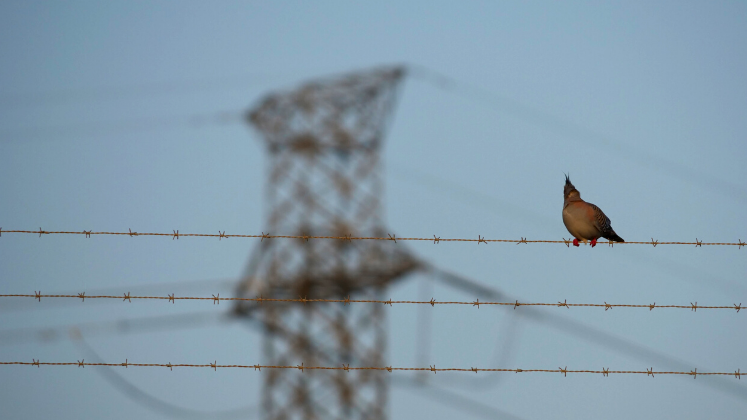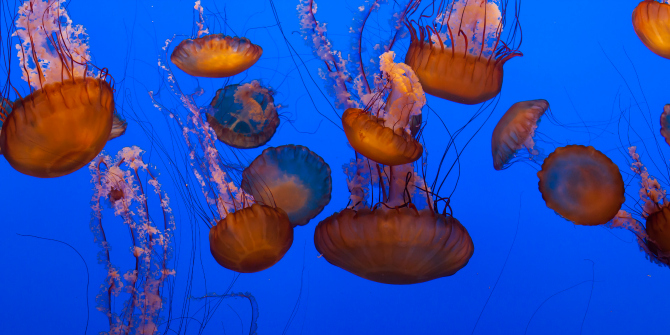In Interspecies Politics: Nature, Borders, States, Rafi Youatt explores instances in which relations between human and nonhuman beings complicate and transform our conventional understandings of politics. This is an important contribution to burgeoning transdisciplinary scholarship that demonstrates not only the injustices that anthropocentrism inflicts upon human and nonhuman worlds, but also how it makes us systematically misunderstand ourselves, writes Philip Conway.
Interspecies Politics: Nature, Borders, States. Rafi Youatt. University of Michigan Press. 2020.
Find this book (affiliate link):![]()
 It has now been 22 years since Paul Crutzen and Eugene Stoermer proposed ‘Anthropocene’ as the name for a new geological epoch brought about by the effects of human industrial activity and consumption. Over the past decade or so, the Anthropocene has gone from niche jargon to popular buzzword — and perhaps, these days, even a bit of a cliché. As the hype ebbs, however, academic studies of the intensely holistic, interdependent, relational, more-than-human qualities of planetary politics continue to prosper. Rafi Youatt’s Interspecies Politics: Nature, Borders, States is a case in point.
It has now been 22 years since Paul Crutzen and Eugene Stoermer proposed ‘Anthropocene’ as the name for a new geological epoch brought about by the effects of human industrial activity and consumption. Over the past decade or so, the Anthropocene has gone from niche jargon to popular buzzword — and perhaps, these days, even a bit of a cliché. As the hype ebbs, however, academic studies of the intensely holistic, interdependent, relational, more-than-human qualities of planetary politics continue to prosper. Rafi Youatt’s Interspecies Politics: Nature, Borders, States is a case in point.
Like many in the humanities and social sciences, Youatt laments the anthropocentrism and implicit colonialism of ‘Anthropocene’, preferring the term ‘Ecocene’ instead (3). His focus, moreover, is not so much geological as situational, investigating a number of specific geopolitical, international and — most crucially — interspecies circumstances where the relations of human and nonhuman beings complicate, and perhaps even demand the transformation of, our taken-for-granted understandings of politics.
Youatt’s analyses of concrete circumstances are interwoven with far-reaching theoretical reflections, circling around what, to many, will surely be a provocative central thesis: namely, that ‘political life involves the interactions of multiple species over the conditions of shared life’ (1). Politics is ‘interspecific’, not just in certain circumstances but at its core. This is, however, politics of a quite particular sort. It is ‘thin politics’: ‘politics in the absence of government’. Accordingly, interspecies politics, and hence politics as such, finds its model in ‘the thin political relations between nation-states’ (9).

Image Credit: Photo by Cameron Raynes on Unsplash
The first of Youatt’s case studies — focusing on the US–Mexican border (27–50) — is, for me, the strongest in advancing this argument. The border is a racial-ideological barrier, crucial to the imagination of US white nationalism. It is also, though rather incompletely, a technological barrier, built from walls, fences, firearms, surveillance techniques and raw physical violence. In some parts, this technological barrier takes advantage of given or ‘natural’ obstructions to movement. At others, the walls and fences are themselves subverted by the often harsh and always shifting landscape.
However, at every stage, the border is also a porous frontier, traversed by both humans and a panoply of nonhuman species — jaguars, ocelots, nilgai, ticks, white-tailed deer — all of which participate in the construction and contestation of the practices of sovereignty; all of which have complex, overlapping sovereignties of their own. The case is convincingly made: no adequate political and/or international account of the border seems possible without consideration of interspecies relations. The human story requires the nonhuman story, and vice versa.
The second case study, I found fascinating but less convincing: on the ecological circumstances of the notorious US torture base at Guantánamo Bay (51–69). The chapter particularly focuses on the so-called ‘Banana Rats’, or hutia — an elsewhere-endangered rodent species that thrives in and around the US base. National security, Youatt argues, is already ‘interspecific’: it requires the elimination and management of threats across species lines. Indeed, the very relation of human to subhuman — as the institution of torture necessarily presupposes — is itself produced through interspecies practices.
This seems true. However, the relationship of humans to hutia at Guantánamo, which can encompass both systematic culling and an ironic kind of celebration, seems less than essential to the dehumanisation that is occurring within the base’s confines. Unlike the US–Mexican border, where no adequate account seems possible in ignorance of local interspecies entanglements, an adequate account of torture at Guantánamo seems very much possible without ever mentioning the hutia, as richly emblematic as this relationship is of the multispecies reality of security practice.
The fourth chapter brings us to Isle Royale National Park and to the case of wolves (73–96). A more perfect example of the territoriality and sovereignty of a nonhuman species one could not wish for. Indeed, there is a reason why wolves are deeply woven not only into human security practices but also into mythology — an untamed, mysterious other, lurking at the fringes of safety and order. However, at this point Youatt’s book begins to demonstrate certain patterns, which put strain upon its central arguments. With only passing exceptions, this is less a book about interspecies or inter-animal politics than it is about inter-mammalian politics. We are dealing only with some very specific species — and thus maybe reaching some rather predetermined conclusions. An investigation of the interspecies relations of migratory birds or microbial life, for instance, might demand a quite different perspective.
Chapter Five takes a slightly different turn, focusing upon the issue of more-than-human personhood, such as it is manifested in legal covenants reached upon the basis of Indigenous cosmological and political principles. Pachamama in Ecuador and iwi-Whanganui in New Zealand are the two main examples (97–113). The recognition of the personhood of the Whanganui River, for instance, constitutes an inter-collective agreement made upon precisely the sort of ‘thin political relations’ (9) — extended not just to ‘interests’ but also to ontologies — that Youatt’s political theory is driving towards. In contrast to the standard all-in-this-together humanist narrative of the Anthropocene, this is a politics premised upon the irreducible reality of political-existential diversity and division (110–13). Answers to the problems of the present epoch must, therefore, come from negotiations between such collectives, not from presupposing a prior identity that would already, in principle, unite them.
Anthropocentrism makes for bad anthropology. Youatt’s Interspecies Politics constitutes an important contribution to a burgeoning transdisciplinary academic literature that demonstrates not only the injustices that anthropocentrism inflicts upon human and nonhuman worlds, but also how it makes us systematically misunderstand ourselves. The international, Youatt implores, ‘is not a space above but rather a constitutive element of societies everywhere’ — societies, that is, both human and nonhuman (18, 145). These arguments, while primarily directed towards Youatt’s colleagues in the discipline of International Relations, have ramifications that reach — and deserve to be read — well beyond that community.
The book is not without its limitations. Its emphasis on inter-mammalian relations, I have already mentioned. Its go-to theorists, meanwhile, are largely limited to those superstars of the poststructuralist canon — Jacques Derrida, Judith Butler, Michel Foucault and so on. Despite the seemingly anarchic presuppositions of Youatt’s political theory — which grounds politics itself upon ‘the absence of government’ (9) — anarchist political thought is notable by its absence.
I have approached this review as a chance to take stock. Youatt’s Interspecies Politics is, in many respects, typical of a now well-established transdisciplinary genre. Its crucial value is that it demonstrates the importance of the international as a concept and problem not only for specialists of International Relations but also for anthropologists, geographers and posthumanists of every field. Its crucial limitation is, perhaps, that the book continues to lean so heavily on the very traditions of thought that it seeks to go beyond. While theorists writing on the Anthropocene are legion, it may be that our theorists of the Anthropocene — or Ecocene — have yet to arrive.
Note: This review gives the views of the author, and not the position of the LSE Review of Books blog, or of the London School of Economics and Political Science. The LSE RB blog may receive a small commission if you choose to make a purchase through the above Amazon affiliate link. This is entirely independent of the coverage of the book on LSE Review of Books.







